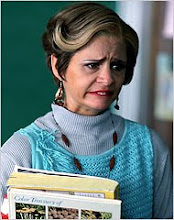
The images of prison guards and correctional officers in the media are vastly different from reality. Britton writes that most prison guards are seen as “a hulking man in a uniform carrying a nightstick or even a gun.” The images of prisons and prison guards are largely gendered and inaccurate. In reality, correctional officers are always unarmed. These images reflect society’s ideas about gender and that violence is connected with masculinity. “Violence is closely tied to hegemonic forms of masculinity that to be a ‘real man’ is…to know how to use violence and to be willing to do so under appropriate circumstances.” (Britton p. 2). The image of the prison guard or correctional officer is one of masculinity and it is not common that women are encouraged to aspire to this type of career. “At work in the Iron Cage” also discusses how people view the prison guard by using examples of jobs that are commonly desirable to children. Britton talks about how it would be seen as worrisome if a small child were to say that he wanted to grow up to be a prison guard, and even more so out of the ordinary for a female child. The context of women in prisons shifts dramatically from that of men. There are few films that show women as being able to successfully manage prisoners and the majority of prison films involving women are sexual. “By mid-2002, there had been 91 “women’s prison” movies released as compared with 657 prison films (Britton p. 13). Women are also pushed into more clerical positions within the prison while men are responsible for handling the prisons. There are some differences between the images of male correctional officers in male prisons than those in female prisons. The men’s prisons are depicted as extremely violent while the women’s prisons are depicted as extremely sexual. In addition, female criminals were viewed by penologists and criminologists as much worse than male criminals (Britton p. 29). Men are considered the appropriate guardians for women criminals according to popular media. In today’s media, it is more common to see female police officers or prison guards, but the area remains predominantly one for men.

No comments:
Post a Comment